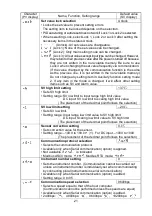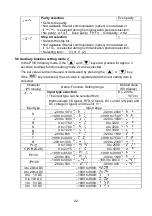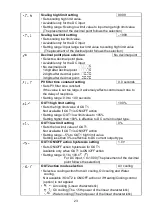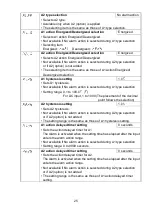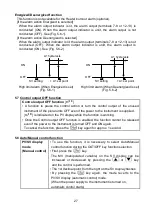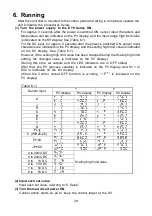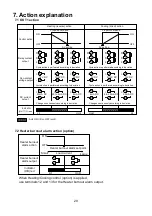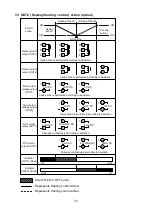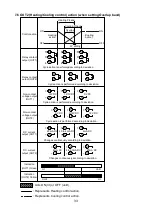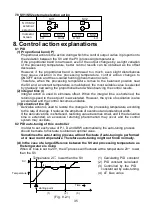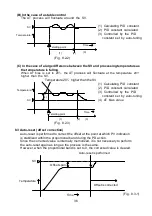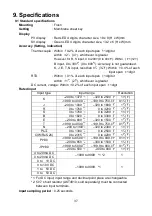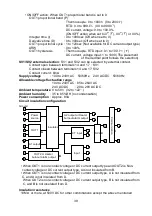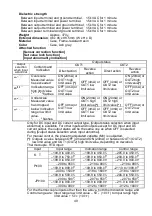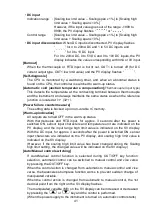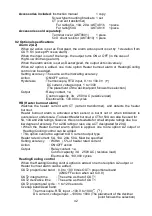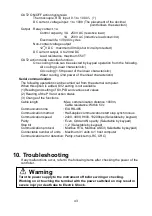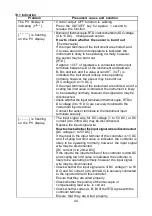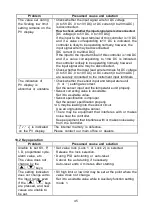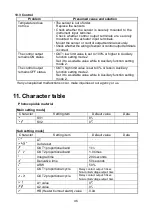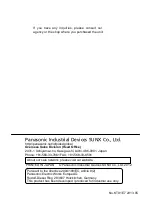
35
7.8 SV1/SV2 external selection action
8. Control action explanations
8.1 PID
(1) Proportional band (P)
Proportional action is the action during which the control output varies in proportion to
the deviation between the SV and the PV (processing temperature).
If the proportional band is narrowed, even if the output changes by a slight variation
of the processing temperature, better control results can be obtained as the offset
decreases.
However, if the proportional band is narrowed too much, even slight disturbances
may cause variation in the processing temperature, control action changes to
ON/OFF action and the so-called hunting phenomenon occurs.
Therefore, when the processing temperature comes to the balanced position near
the SV and a constant temperature is maintained, the most suitable value is selected
by gradually narrowing the proportional band while observing the control results.
(2) Integral time (I)
Integral action is used to eliminate offset. When the integral time is shortened, the
returning speed to the set point is accelerated. However, the cycle of oscillation is also
accelerated and the control becomes unstable.
(3) Derivative time (D)
Derivative action is used to restore the change in the processing temperature according
to the rate of change. It reduces the amplitude of overshoot and undershoot width.
If the derivative time is shortened, restoring value becomes small, and if the derivative
time is extended, an excessive returning phenomenon may occur and the control
system may oscillate.
8.2 PID auto-tuning of this controller
In order to set each value of P, I, D and ARW automatically, the auto-tuning process
should be made to fluctuate to obtain an optimal value.
Sometimes the auto-tuning process will not fluctuate if auto-tuning is performed
at or near room temperature. Therefore auto-tuning might not finish normally.
(A) In the case of a large difference between the SV and processing temperature as
the temperature is rising
When AT bias is set to 20 , the AT process will fluctuate at the temperature 20
lower
than the SV.
(1) Calculating PID constant
(2) PID constant calculated
(3) Controlled by the PID
constant set by auto-tuning.
(4) AT bias value
(Fig. 8.2-1)
SV1
SV1/SV2
external
selection
14
17
14
17
SV2
SV1
SV2
SV1
SV2
Lit
Unlit
Unlit
Lit
Indicator
G reen
(1)
(2)
(3)
(4)
AT starting point
SV
Temperature
Time
Temperature 20
lower than the SV

